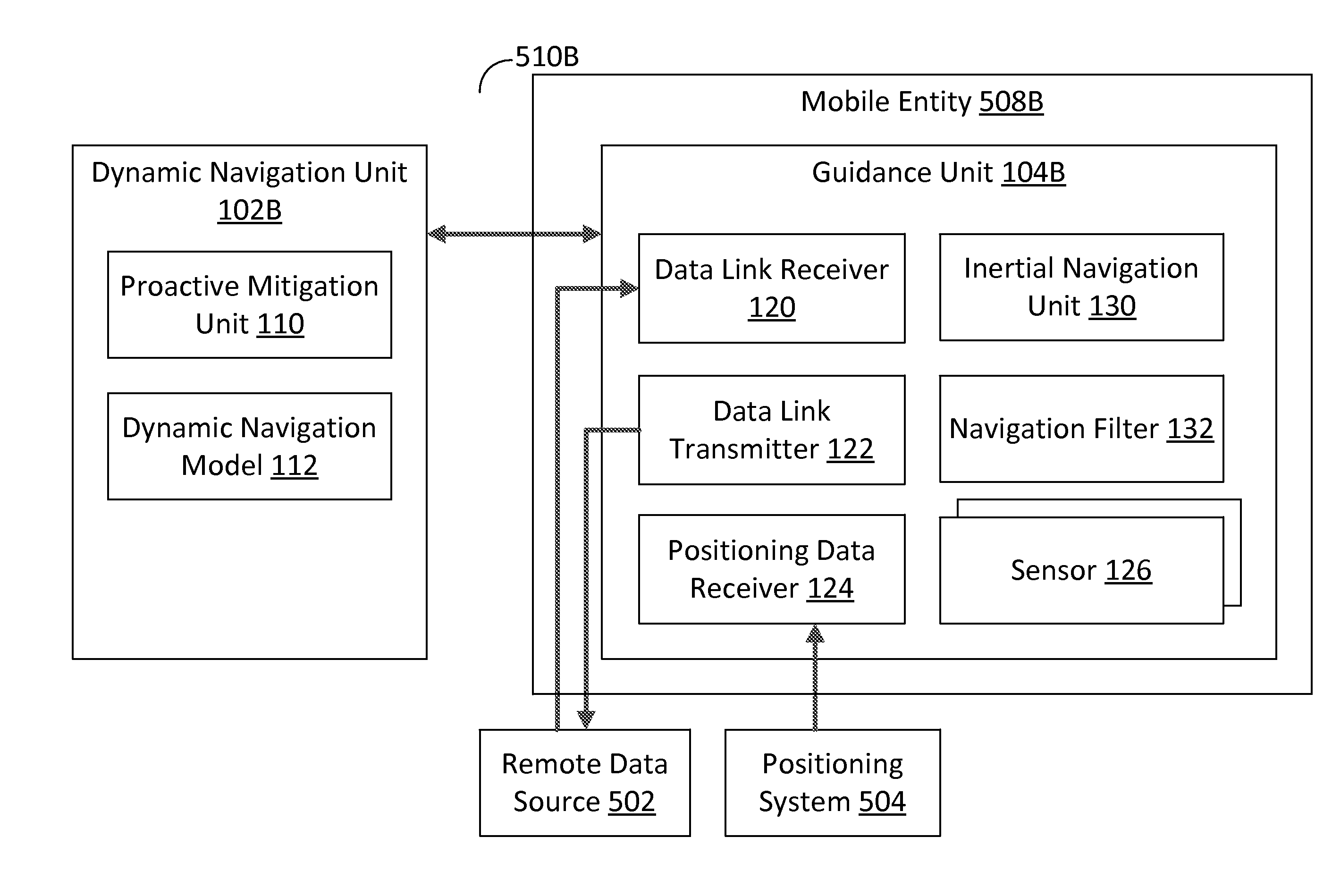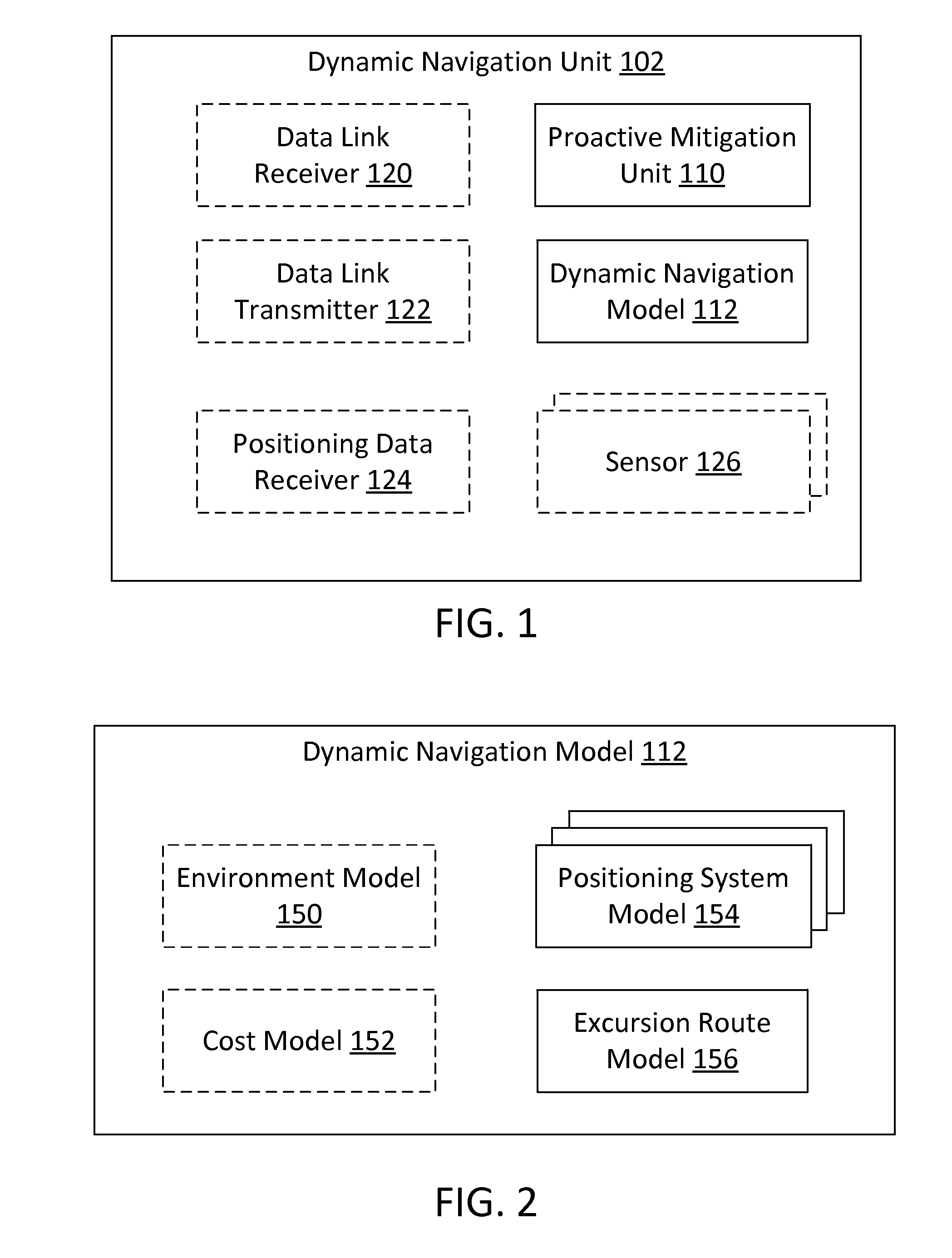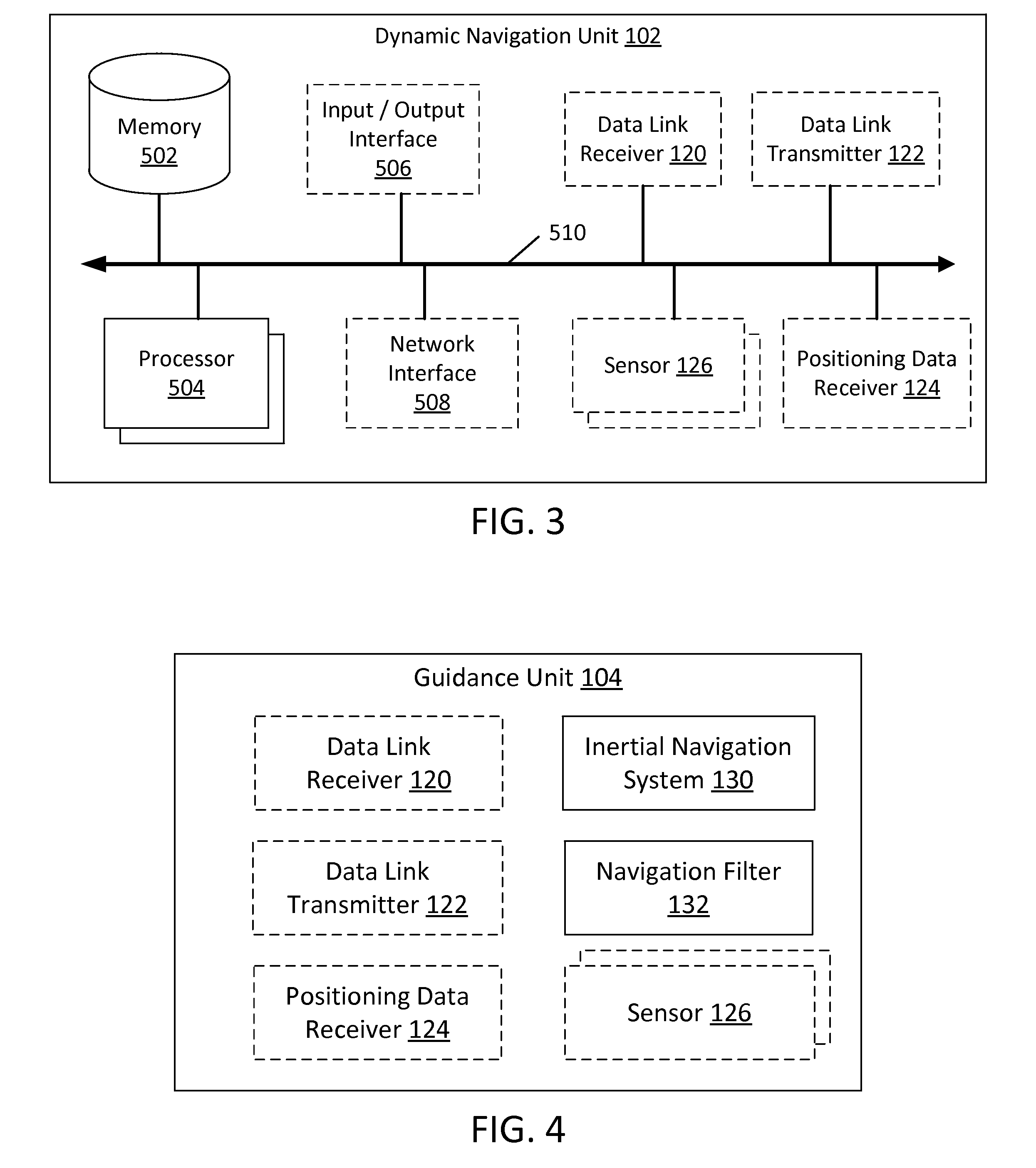Navigating in areas of uncertain positioning data
a positioning data and uncertainty technology, applied in the field of navigation in uncertain positioning data, can solve the problems of short-term responsiveness of inertial navigation system, inability to accurately estimate the location of entities, and increased errors in the ins's estimate of entities' location
- Summary
- Abstract
- Description
- Claims
- Application Information
AI Technical Summary
Benefits of technology
Problems solved by technology
Method used
Image
Examples
Embodiment Construction
[0051]Embodiments of the present disclosure relate generally to methods, systems, and devices for navigating. Some embodiments relate specifically to navigating in circumstances where the operation of a positioning system may be hindered or disrupted by one or more forms of interference.
[0052]Interference with the transmission or reception of a positioning system's signals may adversely affect the positioning system's performance (e.g., accuracy or reliability). Sources of interference with a positioning system's operation may include terrain, weather, equipment failure, deliberate signal jamming, use of the positioning system's frequency band by unauthorized devices, excessive use of the positioning system's frequency band by authorized devices, or any other naturally-occurring or man-made object or phenomenon that produces noise or other signals in the positioning system's frequency band or otherwise disrupts, alters, cancels, or dampens the signals transmitted between the positio...
PUM
 Login to View More
Login to View More Abstract
Description
Claims
Application Information
 Login to View More
Login to View More - R&D
- Intellectual Property
- Life Sciences
- Materials
- Tech Scout
- Unparalleled Data Quality
- Higher Quality Content
- 60% Fewer Hallucinations
Browse by: Latest US Patents, China's latest patents, Technical Efficacy Thesaurus, Application Domain, Technology Topic, Popular Technical Reports.
© 2025 PatSnap. All rights reserved.Legal|Privacy policy|Modern Slavery Act Transparency Statement|Sitemap|About US| Contact US: help@patsnap.com



